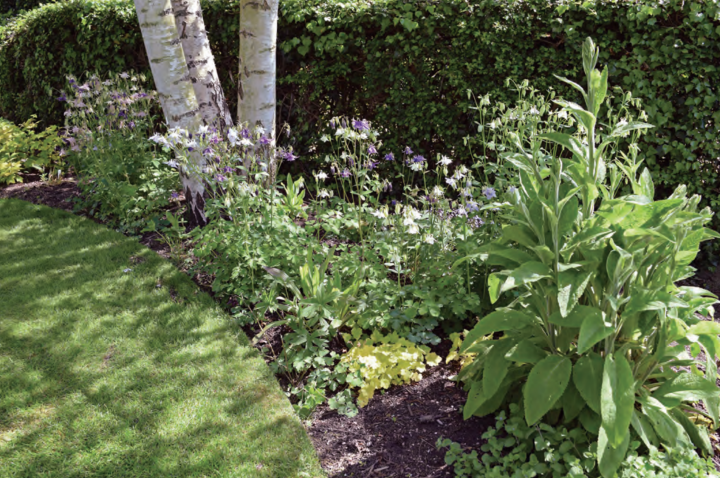Some plants need full sun, others part shade, and others full shade. The amount of light that a plant requires is critical to its survival; many gardeners find that a plant is dying because it’s in the wrong location with too much sun or shade. Let’s take a look at plant shade definitions so that you select the right plants for your yard and garden.
There are as many different interpretations of shade garden types as there are books written about shade. For the sake of consistency, this article uses plant shade definitions from the American Horticultural Society.
What Does Full Sun Mean?
An area in “full sun” receives 6 or more hours of direct sun per day. Many plants with colorful flowers bloom more profusely in full sun. However, keep in mind that shade is not necessarily a negative. A shade garden provides a cool, refreshing retreat that also brings much joy.
What Does Part Shade Mean?
Part Shade or Partial shade refers to a garden that receives 4 to 6 hours of direct sun per day, but most of those hours (4 or more) should come in the morning hours when the sun’s rays are less intense. Most plants seem to prefer direct sun in the morning or evening and protection from the hot midday sun. Partial shade often occurs under or beside trees and shrubs, or next to hedges, walls, fences, and other garden structures.
(Note: “Part Sun” is another term that some gardeners or plant tags will use, though not all. Part sun is defined as 4 to 6 hours of direct sun per day but some of those hours can be in the afternoon. These aren’t really part-shade plants which like a “cool” Sun. They enjoy some heat and intense sun exposure in order to produce flowers—just not all day.)
When it comes to partial shade, there are different categories, which are detailed in the following descriptions:
Dappled Shade
Dappled or filtered shade is created by sunlight filtering through the canopy of open tree branches or through latticework structures, with the pattern of light shifting all day. This is probably the most common shade in suburban backyards and is also the most common woodland shade-garden environment. Plants in this type of shade can receive significant light but it is unpredictable and highly seasonal.

Photo: Dappled shade falling on mixed perennial garden.
Edge Shade
This type of shade is found on the perimeter of a deciduous woodland around individual trees. Light that reaches the plants is sufficient for growth and flowering, but there is enough shade to protect plants from burning during hot, summer days.
Bright Shade
Bright shade falls on the surfaces near lakes, ponds, windows, and white walls which often reflect light. Many plants can actually grow in this bright shade but pay special attention to how much light is reflected at different times of the day and season.
Morning and Afternoon Shade
If you study your home, you’ll noticed that planting areas to the west are in morning shade and heat up in the afternoon sun. However, planting areas to the east will receive morning sun and afternoon shade!
In spring, some plants thrive on morning shade (rhododendrons, magnolias, and fruit trees) because their delicate flower buds need to warm up gradually after a frosty night. But in summer, west-facing plants receive the hottest sun of the day, so choose tough, drought-tolerant plants that can cope with the afternoon heat.
Late-day sun can scorch leaves and flowers, so site plants that need protection from heat as well as sun. Plants such as hostas, astilbes, and clematis prefer areas with afternoon shade. In general, the hotter your climate, the better afternoon shade is for your plants.
What Does Full Shade Mean?
Generally, “full shade” refers to 2 hours of direct sunlight or less per day. Often, areas in full shade receive little direct sunlight, but some ambient light reaches plants by being reflected off nearby surfaces. In full shade, plants do grow steadily but slowly. You’ll find less flowering plants but those plants with flower have longer blooms because of cooler temperatures.
The darkest areas of full shade are described as “deep shade,” and they receive almost no direct sunlight. These areas of low light intensity are often coupled with dry soil, so plants also need to be very drought-tolerant to grow here.
Both deep and full shade is the dense kind of shade found on the darker side of houses our under evergreens or closely spaced shrubs and trees that do not allow any direct light to penetrate. This is the most cooling kind of shade but is also the most difficult; it takes effort to find plants that will bloom here. But it also can be the most interesting, because the plants suited to it tend to have the best leaf structure.
How to Measure Light Levels in Your Garden
The shade falling across your garden changes daily and seasonally—and every hour—as the Sun moves along its path. Types of shade are determined by the number of hours of shade, the time of day that shade occurs, and the intensity of the light.
One way to determine shade levels is to set an hourly alarm and observe how much direct sunlight your garden receives every hour of the day. Another way to assess shade levels is to purchase a garden light meter.
Select a few sunny days in the garden during the summer (not cloudy days). Find the spot where you’d like to plant, then keep track on a sheet of paper whether or not that spot is receiving direct sunlight each hour of the day. Do this for a few days to find an average.
If you have a shady garden, don’t worry. There are many plants that adore the cool shade (as will you during a hot sweltering summer!).
See flowers and plants for a shady yard!
See which vegetables and fruit can grow in shade.
